Only last year did I discover the beautiful region of the Harzgebierge, home to the largest mountain chain in Northern Germany. When you live in a place, it is easy to become oblivious to its external appeal. I was born in Germany and grew up in France, and honestly feel like I haven’t explored either country enough.
The Harz Mountains are an absolutely delightful part of Germany that still remains relatively untouched by tourism. I bet that you will add this German destination to your travel bucket list as soon as you have finished reading the post.
On arrival, we were delighted to find an amazing collection of medieval cities, castles, and UNESCO World Heritage sites. Sadly we were only visiting the Harz Mountains for three days, so we cannot wait to go back.
WHY YOU SHOULD VISIT THE HARZ MOUNTAINS
The Harz Mountains are located in Lower Saxony and combine rolling mountains with a dense pine forest. Set in this jaw-dropping landscape you will discover a multitude of quaint medieval villages. And you will fall in love with their narrow cobblestone alleyways and the very distinct architecture of steep-roofed half-timbered buildings.
Perhaps the setting will feel somewhat familiar. In fact, I am sure that it will remind you of your childhood because you will have encountered many such scenes in the fairy tales you were told as a kid. The Harz Mountains are the land of German fairy-tales, home to the wicked witch, dwarves, poor woodcutters and royalty.
Indeed, the Harzgebierge is perhaps most famous for being one of the main sources of German folklore. Many of the Brothers Grimm stories are based in this area: Cinderella, Hansel and Gretel, Sleeping Beauty, Rumpelstiltskin, Tom Thumb, Little Red Riding Hood, Rapunzel, The Frog Prince, and The Wolf and the Seven Kids.
The Harz is also known for its many silver mines. Most of the region’s inhabitants used to earn their living underground and this can be seen in the wealth of the towns. The history of the area is echoed in tales such as Snow White and the Seven Dwarves.
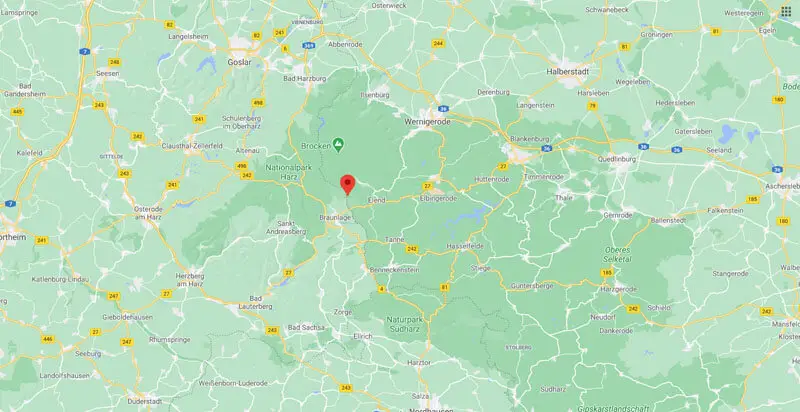
HOW TO GET TO THE HARZ MOUNTAINS
Eventhough the Harz Mountains aren’t centrally located, they aren’t particularly easy to get to (unless you live in Germany and have a car) and that is without a doubt one of the main reasons why the area as of yet remains relatively undiscovered. But if you do choose to make the effort to get there, you will be richly rewarded.
TRAVEL TO THE HARZ BY AIR
Sadly there currently is no regional airport in the Harz region. And there are no major cities with airports in close proximity to the Harz. The closest cities to the Harz mountains are Berlin, Hamburg, Hannover, Frankfurt and Leipzig. From there you will need to travel to the Harz by train or car.
In our opinion, hiring a car is the better option, since it will make your trip a lot easier overall. But the journey by car takes about an hour and a half from Hannover or just under two and a half hours from Berlin. You could even start your trip with a day in Dresden and then drive to the Harz from there.
TRAVEL TO THE HARZ BY TRAIN
But perhaps you don’t have the budget to hire a car or you feel uneasy at the idea of driving on the other side of the road. Don’t fret!
There are regular trains that run from Hannover or Berlin to Goslar. There are also trains that connect the Harz to the smaller towns of Halberstadt, Kassel and Goettingen.
For more information and to check the German railway schedule check out the website of the Deutsche Bahn.
TRAVEL TO THE HARZ BY BUS
Alternatively, there is a wealth of interregional busses that connect the Harzgebierge with Berlin, Magdeburg, Kassel, Dortmund and Düsseldorf.
HOW TO TRAVEL AROUND THE HARZ
As mentioned above in our opinion the best way to visit the beautiful natural area is by car.
You will want to make sure your rental car has a satnav or alternatively bring a map. Whilst the Michelin map is very thorough, it is also gigantic. We would suggest you get the Rough Guide instead unless you are planning to visit more of Germany. These maps are tough enough to withstand repeated folding and unfolding, and their lamination ensures that water won’t destroy them either.
Another fun way to get around the Harz mountains is by old steam rail. There is actually an extensive network of narrow gauge trains, that connect several towns of the Harz. They aren’t just for tourists either but are a common way of transport in the region.
BEST TIME TO VISIT THE HARZ MOUNTAINS
Gary and I visited the Harz Mountains in February. This was a beautiful time of year to be visiting the area. The mountains and pine trees were covered in snow. It was so pretty. Although if you are planning to do the same, do wrap up warm., it can get very chilly.
Another good time to visit the Harz Mountains is April to May. As I have mentioned earlier on the region is famous for its many fairy tales. And in this spirit on April 30th, this entire area of Germany celebrates Walpurgis Night. So if you find yourself traveling to the Harzgebierge around this time, don’t be surprised if you spot a witch strolling through the street of Goslar. According to a local legend, all witches gather on Walpurgis Night at the summit of the Brocken (the region’s most famous mountain) to celebrate the arrival of spring.
WHERE TO STAY IN THE HARZ MOUNTAINS
Most of the towns in the Harz mountains are located fairly close to each other. So if you prefer booking just one hotel, it is entirely feasible to pick one town to stay in and then take individual trips to the others. Wernigerode is the most central town and therefore probably a goof pick.
If you have a little more time on your hands and want to see as much of the area as possible, you could stay in Goslar for a couple of nights, in order to hike up the Brocken and visit the Rammelsberg mine just outside of town. Then book a hotel in Thale and do a day-trip to Quedlinburg from there.
Because we travelled to the Harz Mountains for the occasion of my Gran’s birthday, we didn’t actually choose our hotel. This was done by my gran. However, after staying there for two nights, I am more than happy to recommend the hotel to others.
We stayed in the village of Hahnenklee in the Hotel Walpurgishof. The village itself is a quiet place surrounded by mountains and forest and adjacent to a gorgeous lake. It is located about 20 minutes by car from Goslar. Both our bedroom and bathroom were gigantic. Our stay also included breakfast and a dinner buffet for three days. And the food was delicious!
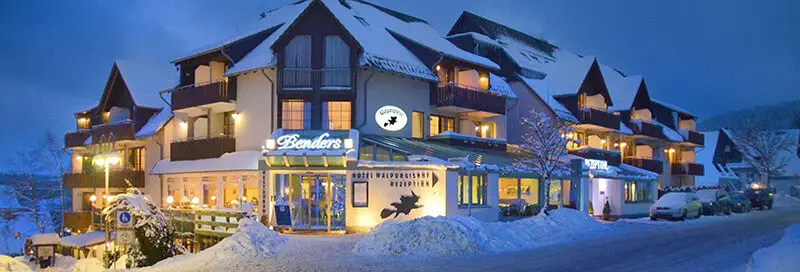
THE BEST THINGS TO DO IN THE HARZ MOUNTAINS
VISIT THE MOST SOUTHERN STAVE CHURCH IN EUROPE
We were lucky to find our first local attractions straight across from our hotel. Hahnenklee is home to the most Southern Neo-Viking Church in Europe. The Gustav Adolf Stave Church was built in 1904 and is a copy of the Norwegian Borgund Stave Church . At the time of its construction, Hahnenklee was a renowned spa town and popular tourist destination. The church was designed by Karl Mohrman a representative of the historicist Hanover school of architecture.
This stave church is almost entirely made of wood, harvested from the nearby Bocksberg mountain. Gary and I were hugely impressed by the interior of the church. In fact, we could easily have spent hours in there discovering all the small archaic symbols and Viking ship design features. The interior also featured a carillon, a mechanical and electronic glockenspiel, spanning more than four octaves.
One moment we were in the Harz, the second we were magically transported to medieval Norway and the land of Vikings. Entrance to the church was free but there was a donation box, so I popped in a couple of quid.
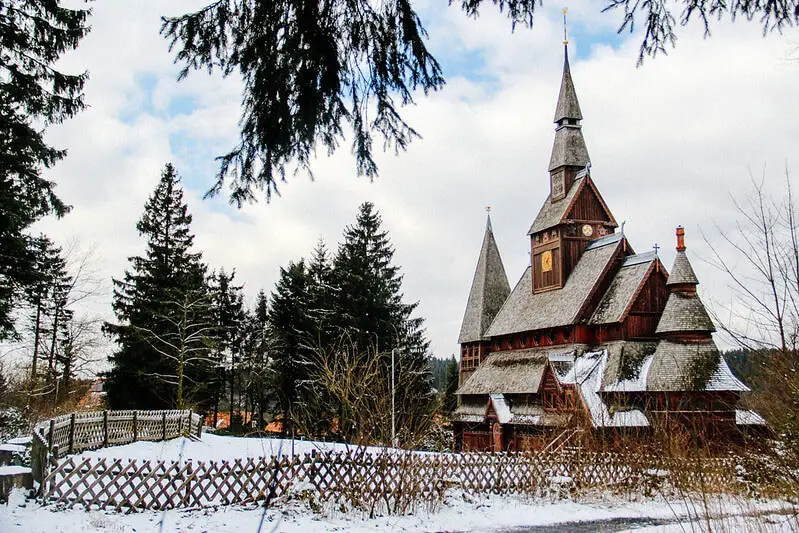

HIKE UP THE BROCKEN
If you are going to travel to the Harz Mountains, then you really cannot leave before you have hiked up the Brocken. On clear days you can see this gigantic mountain from pretty much every corner of the region. That’s not surprising really since at 1141 meter the Brocken is the highest point of the Harzgebierge.
The mountain was also immortalised by Goethe who used it as a setting for one of his most famous scenes in Faust. It is at the summit of the Brocken that witches meet every year for Walpurgisnacht. The Brocken is an inherent part of Germany’s cultural identity, and its place in people’s hearts has further been cemented after years of division between East and West Germany.
In fact, it is on this mountaintop that Russia and Eastern Germany (the former DDR) spied on the West by tapping radio communications. Located right on the border between the two Germanys, the Brocken was actually surrounded by a huge concrete wall and sealed off by the DDR government. The mountain was only made accessible to the public again after the 3rd December 1989.
So, after popping into the Viking Church up the mountain we went. As I said before the Harz Mountains are said to be inhabited by goblins, demons and witches. Honestly, though you are far more likely to spot a deer, wild boar or a lynx ; ) In fact we met a beautiful red fox who was surprisingly docile.
Walking up to the summit of the Brocken was astonishingly easy. Even the navigation was child’s play thanks to the numerous signposted trails which crisscross this German walkers’ paradise.
If however you don’t feel like walking or you are a bit of a train geek (like Gary) then you should consider hopping on the Brocken Railway (an old steam train) to take you to the top of the mountain instead. The Harz Mountains has a network of nostalgic narrow-gauge railways. These antique steam engines chug up and over the mountains, connecting the little villages of the Harz -Wernigerode being the closest one to the Brocken. This is not something we did personally but I am sure that it would make your trip unforgettable. The train passes through the dense forests of the region, as well as it’s many valleys. You can even go outside and stand between the different sections of the train and feel the wind in your hair.
Once we reached the summit of the Brocken we took in the magnificent views: kilometers of green fields, small villages, and an impressive mountain range. From here the Harz showed us her beauty to the full extent! Note that is super cold at the top, so make sure to wrap up warm and bring extra clothes.
EXPLORE THE TOWN OF GOSLAR
What probably surprised and delighted us the most about the Harz Mountains was the beauty of its medieval towns and villages. The narrow cobblestone streets of these towns are lined with half-timbered houses, known as Fachwerkhäuser – one of my favourite types of architecture. Fortunately, most of these towns escaped the extensive damage that fell upon German cities during World War II. Exploring towns like Quedlinburg, Goslar and Wernigerode is bound to make you feel like you stepped through time into another century.
Situated at the very edge of the Harz Mountains, Goslar is a UNESCO World Heritage Site. This is mainly due to its many preserved medieval buildings and the long history of the place. Goslar is also known as the “Kaiserstadt” (city of the emperor) and has 50,000 inhabitants. Whilst most of the Harz Mountains remain unexplored, 400,000 tourists travel to Goslar every year, generally to visit the fabulous Christmas market in the heart of the old town. That being said most of these tourists hail from Germany, the Netherlands, and Sweden. For some reason, the Harz isn’t that popular with us Brits.
Goslar is famous for the remarkable wood carvings on the exterior of its houses, some of which are rather scandalous! The only thing better than roaming through its streets, however, is to see Goslar and its red rooftops from above. You can do this by ascending to the top of the tower of the Marktkirche (Market Church) It is also definitely worth popping into the Kaiserpfalz. The palace was built in the 11th century and served as the residence of German emperors and kings. A visit costs 7,50€ and you can choose between a tour, or renting an audio guide and exploring the place yourself. A visit takes approx. 1 1/2 hours and if visiting by car, you can park directly in front of the building and then go on to explore the city on foot from there.
What to see in Goslar: Old Town, The Cloth Merchants Guild Hall (Kaiserworth), The Town Hall (Rathaus), Market Square (Marktplatz), Market Fountain, Market Church, The Zwinger Tower, Imperial Palace (die Kaiserpfalz), Goslar Cathedral, Baker’s Guildhall, Broad Gate, Lohmühle (watermill), Mines of Rammelsberg.
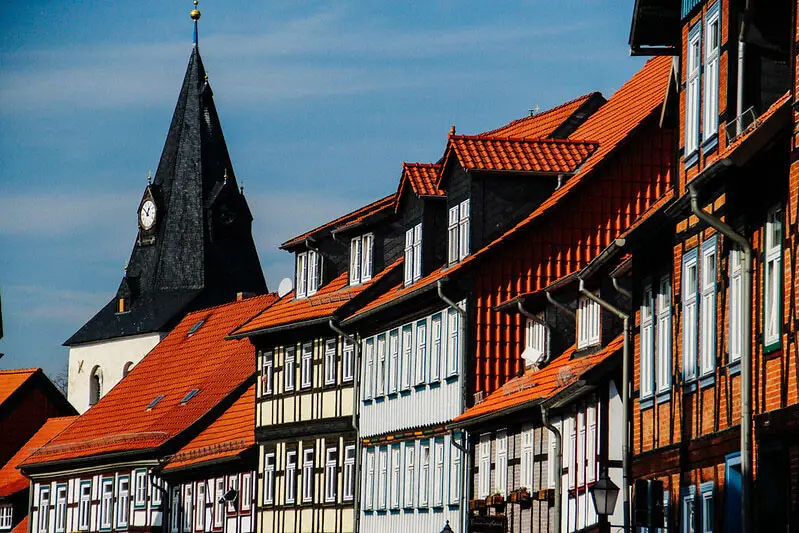
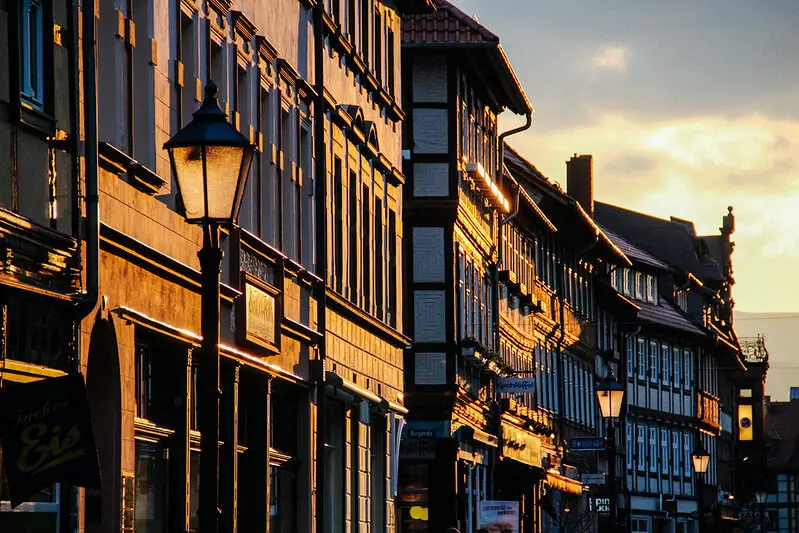
ROAM AROUND THE FAIRYTALE CASTLE OF WERNIGERODE
The small town of Wernigerode lies at the base of the Brocken. Like most of the Harzgebierge’s small towns, the main industry of Wernigerode used to be mining silver and copper. This is a true gem, filled with street after street of half-timbered houses. The best thing that you can do is to wander around the streets of the Altstadt and soak in the atmosphere.
We walked down the pedestrianised Breite Strasse, admired the elaborately-carved wooden homes, and popped into one or two shops along the way. The Gothic town hall (Rathaus) was built in the 16th century and is an impressive orange building. It is located on the main square along with houses of the more prosperous town burghers. Back in the days, the less well-to-do lived at the southern end of the town. Here on a street called Kochstrasse, we found the smallest house in Wernigerode. Its ground floor only has one 10sqm room.
We then had lunch at the Kartoffel Haus, a restaurant that only serves potato-based dishes, where we both ordered Kartoffelpuffer with apple mousse. Yum!
Sitting above the town on a hill overlooking the wonderful collection of medieval houses is a beautiful medieval castle, worthy of any fairytale. The walk from the old town to the castle takes about 30 minutes and is relatively steep. Notice all the gargoyles that guard the approach! Wernigerode Castle was built in the 12th century and was the seat of the Counts of Stolberg until the communist government confiscated it in 1945. It is now a museum and open to visitors. The interior has been kept as it was when acquired from the family. Each room is filled with exquisite medieval furnishings, tapestries, and intricately detailed wood carvings. Note that most of the information panels have not been translated to English as of yet. It might surprise you that Germany has lots of fairytale castles, the most famous of which is the beautiful Neuschwanstein Castle.
What to see in Wernigerode: Wernigerode Castle, Market Square (Marktplatz), Town Hall (Rathaus), Breite Straße (the main street), Our Lady Church (Liebfrauenkirche), St. Sylvestri Church, Harzmuseum, Luftfahrtmuseum (aviation museum), the ‘’Smallest house’’.
ADDITIONAL THINGS TO SEE IN THE HARZ MOUNTAINS
Gary and I only travelled to the Harz Mountains for a weekend. This really wasn’t long enough to explore this incredible region. There are quite a few things we didn’t get to see and that in retrospect we wish we had. Perhaps another trip is required?
So here are a couple more places and attractions that you could visit if you are planning to stay a little longer in the Harz than we did.
STROLL THROUGH QUEDLINBURG
Quedlinburg, located to the North of the Harz Mountains, is probably one of the most Instagram-worthy locations in the Saxony-Anhalt region. It has also been listed as a UNESCO site since 1994, due to its 1300 high-quality timber-framed buildings.
Did you know that Quedlinburg was Germany’s first ever capital? It was ruled by King Heinrich I – who is credited with being the founder of medieval Germany. Quedlinburg was therefore a very important place in the Middle Ages. It then went on to be ruled by women for more than 800 years until Napoleon invaded it in the early 19th century. One of the darker parts of its past, is the fact that Quedlinburg was the epicentre of Nazi propaganda in the 1930s. But it thankfully suffered very little damage during World War II and most of it remains intact.
Walking down the cobbled streets of Quedlinburg is like stepping into a fairy-tale, the Beauty and the Beast immediately spring to mind. It is one of Europe’s most exceptionally preserved medieval renaissance towns. Quedlinburg castle – Schlossberg – was built on a plateau and thrones over the market town. Not unlike Edinburgh, a network of narrow cobblestone streets and alleyways radiate out from the castle and lead to the market square. The market square itself is dominated by the city hall (Rathaus) and beautifully ornate half-timbered houses.
For lunch or a quick snack, pop into one of Quedlinburg’s famous and fairly priced bakeries. Another great foodie place is the Pfannkuchen Café (Pancake Café), which has a quaint courtyard seating area. Afterwards stroll along one of the small rivers that dissect the town and pop into the park to relax.
The best thing about Quedlinburg is that it isn’t as well known, as some other European medieval cities, and therefore is also a lot less busy.
What to see in Quedlinburg: The Old Town, Castle hill, Quedlinburg Castle, St. Servatius’s Church, Market Square (Marktplatz), Market Church (Marktkirche), Town Hall (Rathaus), St. Blasii Church, Adelshof, Finkenherd narrow house, Park Brühl.
GET OFF THE BEATEN TRACK IN THALE
If you want to really get off the beaten track, then we suggest you visit the quaint town of Thale. This place is particularly famous for its history of witchcraft and pagan rituals, a little bit like Glastonbury. Otherworldly activities supposedly peak on April 30 during the Walpurgisnacht (May Day’s eve) celebrations. So, if you happen to be there around that time, why not join in on the legendary Witches Dance Floor, if you dare.
Thale lies beside the gorge of the Bode River and is a great place to go hiking. Start at the edge of town and follow the Goetheweg, a trail that follows the footsteps of Germany’s most famous poet Johann Wolfgang von Goethe in 1777.
Another fun activity is to hitch a ride on the cable car to the top of the mountain – the Hexenplatzt, which is where the witches come to dance. From here you can enjoy panoramic views of the Bodetal – a 10 kilometre deep valley between Thale and Treseburg. There is also a fun park, mini golf and toboggan run, to keep the kids entertained.
Finally, we would suggest that you visit the Devil’s wall (Teufels Mauer) just on the edge of town. This is an impressive mile-long wall of rock, that has been slowly eroded over time.
What to see in Thale: Cable car, Hexentanzplatz (meaning ‘’the witches dancefloor’’), Hexenhaus (‘’witch’s house’’), Walpurgis Hall, Rosstrappe (scenic viewpoint), Zoo Thale, Rodelbahn Harzbob, Funpark, St. Peter’s Church (Petri Kirche), DDR Museum.
DIVE DEEP INTO THE RAMMELSBERG MINE
For something completely unique, head to the Rammelsberg Mine near Goslar, the first UNESCO World Heritage Site of technology.
Before the Harz Region become a tourist hotspot, its main industry was mining. And the Rammelsberg Mine was operative for more than 1000 years, pulling silver, copper, led and gold from the soil. The earliest mining activities in this area can actually be dated back all the way to the 7th century. After its closure, the mine was opened to the public and started offering tours above and below ground. Its goal is to celebrate the ingenuity of man and all the manual labourers that spent their day-to-day life underground.
Tickets currently cost between 9€ (standard day ticket without a tour) to 25€ (includes 3 guided tours).
TAKE A RIDE ON THE BROCKENBAHN – THE FAMOUS HARZ RAILWAY
I have already mentioned this, but the Harz mountains are well known for its old fashioned narrow gauge railway. One of the most famous lines is the Brockenbahn – a 19-kilometre-long track between Wernigerode and the Brocken.
The 1.5-hour journey takes you through the countryside, stopping in Drei Annen Hohne and Schierke. It is one of scenic rail journeys in Germany, offering jaw-dropping views of the mountains.
The Brockenbahn departs several times a day (times vary between summer and winter) and the fare is currently 31€ for one way and 37€ for a return. I would suggest you book your journey ahead of time, as it’s a popular attraction and can get very busy. In fact, your best bet is to take the first train at 8.55 when most people are still having breakfast
SPOT WILDLIFE IN THE HARZ NATIONAL PARK
The Harz National Park spreads over 247 square kilometers. This spruce and beech forest is filled with deep valleys, strange rock formations, lush meadows and steep cliffs. The National Park is also home to the Brocken. It’s top just peaks out over the dense forest.
Whilst nature is mostly left to its own devices, the national park does offer 9000 kilometers of hiking trails. The most famous one of which is the Hexenstieg, one of the top trails in Germany. Another well-known trail is the Devil’s Path. It starts in Bad Harzburg and leads to the Brocken.
The Harz National Park is a great place to go wildlife spotting. Keep an eye out for foxes, wild boar, red deer, roe deer, and even lynxes – who have been reintroduced to the area. On a clear day, you can watch peregrine falcons glide from thermal to thermal, and during rutting season, you can get a ranger to guide you to the best spot to see a stag fight.
GET YOUR ADRENALINE PUMPING AT THE RAPPBODETALSPERRE
The Harz is a great destination for adrenaline junkies. There are plenty of forest mountain bike tracks with rocky jumping opportunities as well as five bike parks.
And more recently the Harzdrenalin Center opened its doors for thrill-seekers. It is located in the Oberharz, just over an hour away from the Harz Mountains. Here you will find a 1 kilometer long Mega Zipline that crosses the Rappbodetalsperre. The flight across the damn takes about a minute and the ticket costs 39€.
If you can still stand on both legs after this fear-inducing experience, head to the Titan RT swing bridge. It is almost 500 meters long, which makes it the longest swing bridge in Germany, and dangles 100 meters above the Rappbodetalsperre. To access the swing bridge, you will need to buy a ticket which currently costs 6€, plus an additional 3€ for parking.
TAKE A HISTORY LESSON IN LUTHERSTADT EISLEBEN
If you are interested in history or religion, then you might already know that Martin Luther – German theology professor, composer, priest, Augustinian monk and the figure head of the protestant reformation – was born and died in the Harz Mountains. More precisely in Lutherstadt Eisleben. The town prides itself of its heritage and was given the UNESCO World Heritage site status in 1996.
Just for this reason alone Lutherstadt Eisleben is worth your visit.
What to see in Lutherstadt Eisleben: Luther’s Geburtshaus (Birthplace), Luther’s Sterbenhaus (Death House), Luther Memorial, Market Square (Marktplatz), St. Anne’s Church, St. Andreas Church.
CAN YOU VISIT THE HARZ MOUNTAINS WITH KIDS
Can you visit the Harz Mountains with kids? Yes you certainly can. Whilst Gary and I were a family of two back when we visited the Harz mountains for the first time, we certainly wouldn’t hesitate to take our son. In fact, back then my cousins (who joined us on the trip) were 7 and 9.
There are plenty of things to do with kids in the Harz Mountains. Taking a ride on the Seilbahn (cable car) in Thale is always a fun family activity. And once you are at the top of the mountain there are plenty activities to keep the kids entertained, such as the upside-down witches house and the wildlife park where you can feed the deer. There is also an open-air theatre offering shows and a summer Rollerbahn that adults and children can ride. You could also spend a while in the fun park at the bottom of the mountain. Although be warned that most of the rides are aimed at children over 6 years old.
Another great thing to do with the kids is to hitch a ride on the steam train. In fact children under 6 ride for free. The full route might be a little too long for some kids but the journey from Wernigerode Hasserode to Drei Annen Hohne only lasts 30 minutes and still offers stunning views of the mountains.
There are definitely hiking trails that are suitable for children, especially slightly older ones. Indeed, my cousins had no issues hiking to the top of the Brocken with us.
FINAL THOUGHTS ON THE HARZ MOUNTAINS


The Harz region definitely stole our hearts. The combination of history, stunning nature and delicious food came together to create our perfect weekend getaway destination.
If anything, I wish we could have stayed in the Harz for longer than three days. In fact, I really don’t think that three days are enough to discover the Harz mountains. But as a first taster, our short getaway definitely wet our appetite for more.
You can find more guides for Germany here. Or if you haven’t fully decided where to go yet, you can find other great destinations in Europe here.
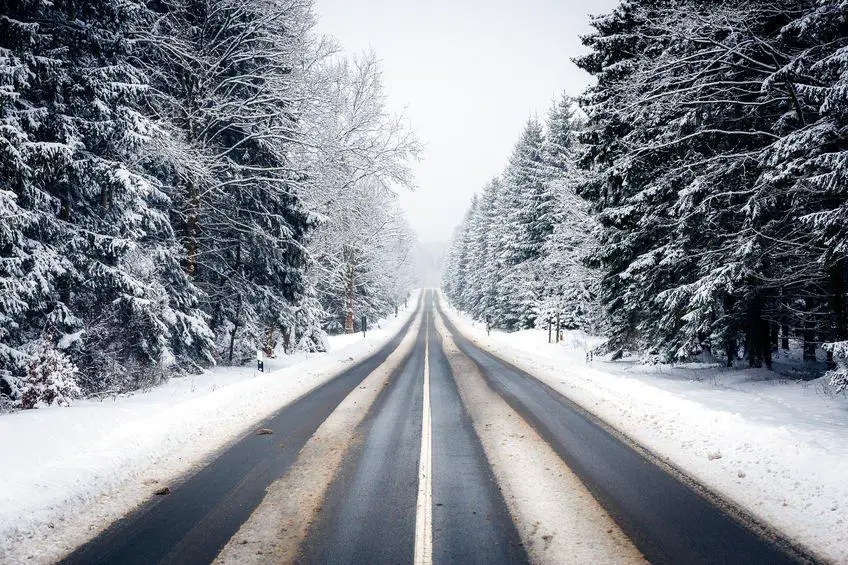
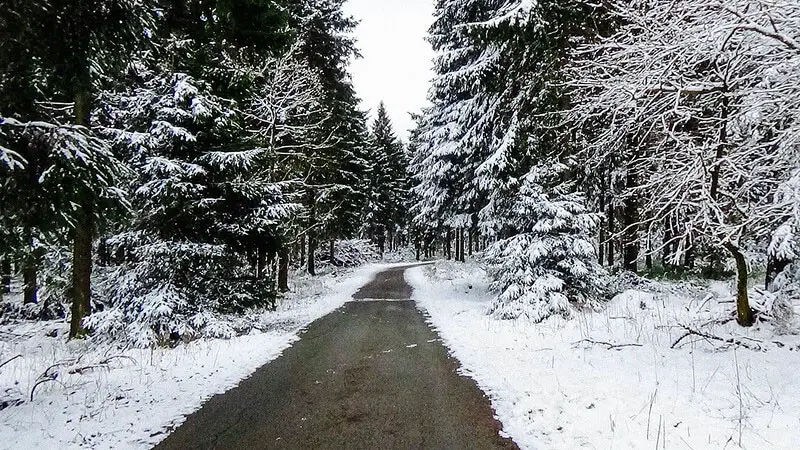
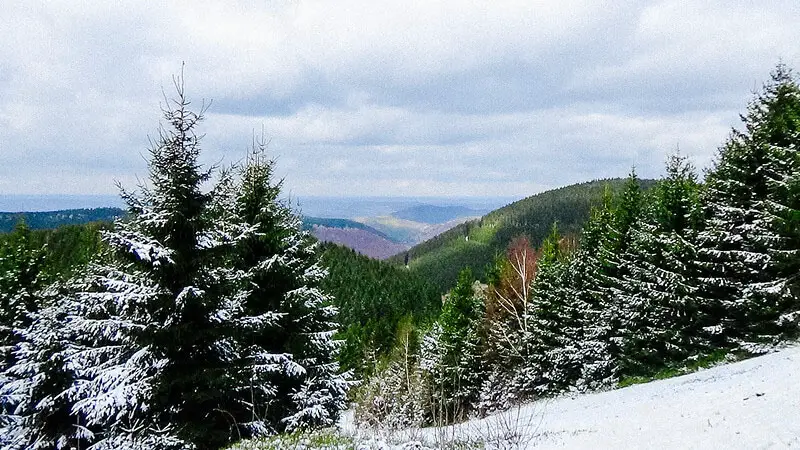
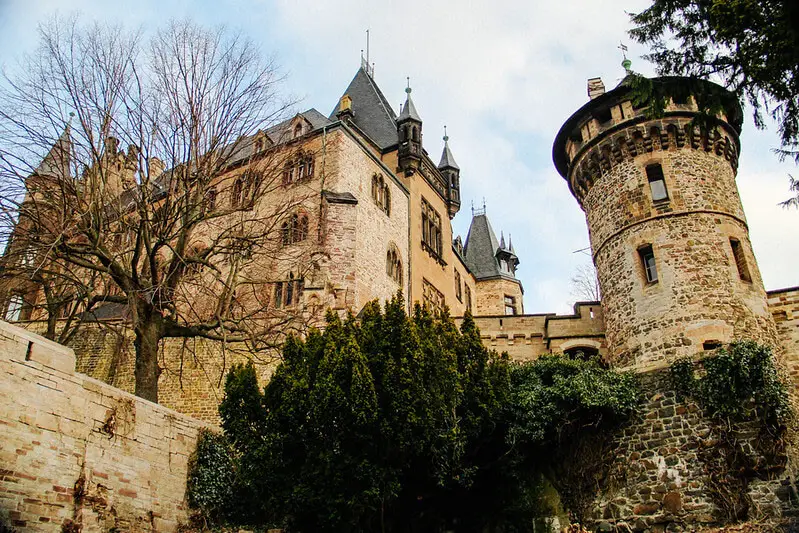
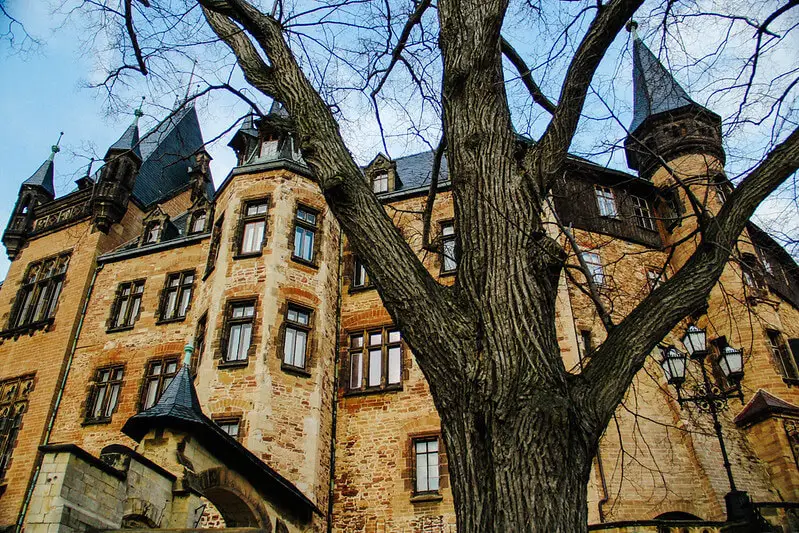
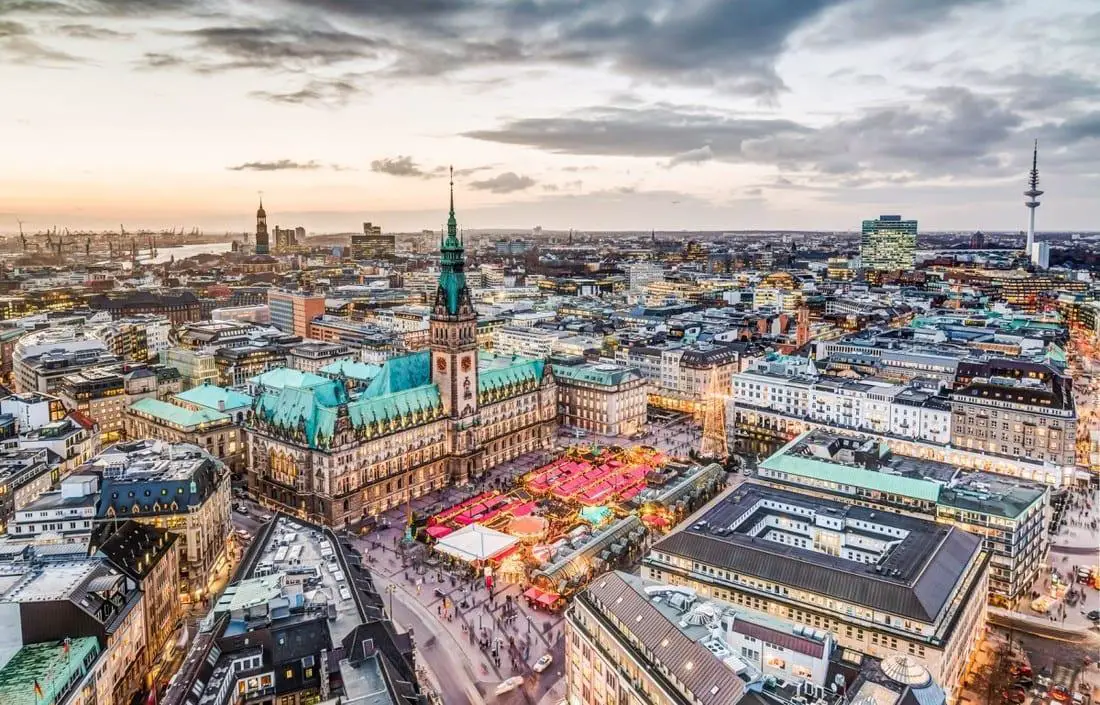
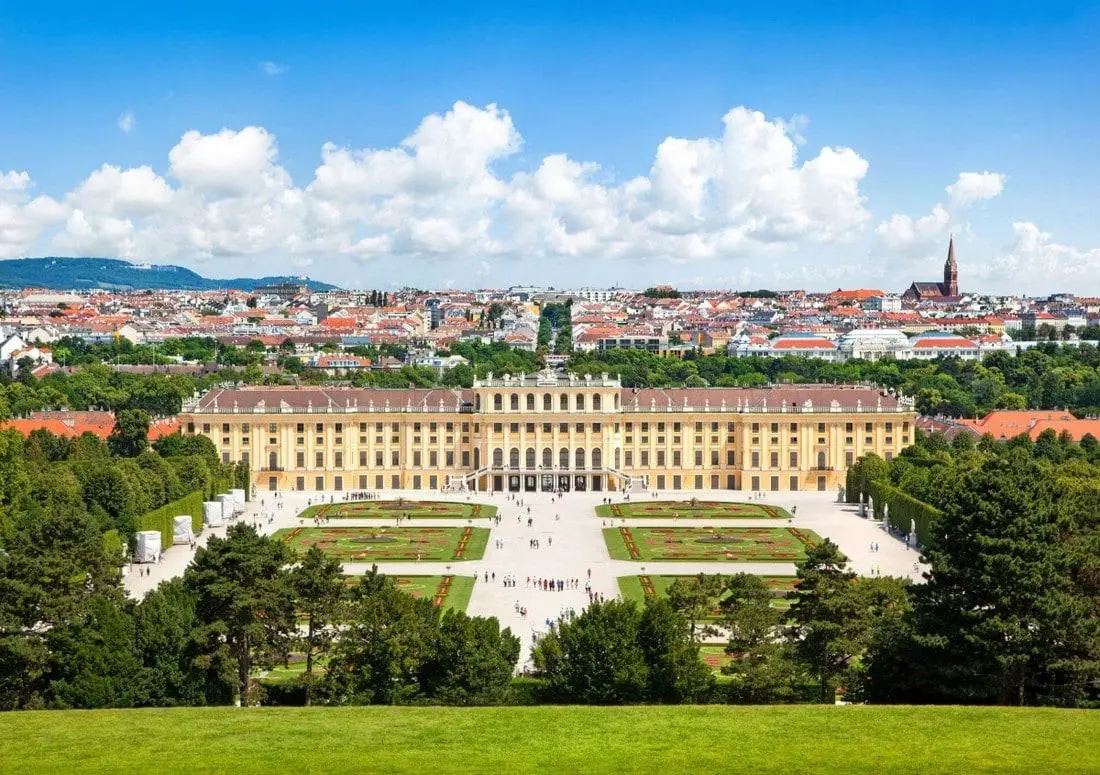




You sold me at the mention of Grimm fairytales. I’d love to see some of the locations that inspired the fairy tales and roaming witches. That church -wow- amazing! And the hotel sounds like it was a great location to tour the area and its small towns, which are my favorite thing to see when I travel!
Thanks for introducing me to the Harz Mountains – I totally agree with you that when you live in a place, it’s difficult to get excited about exploring outside your front door. Exotic places always seem to have so much more appeal, but I keep telling myself that tourists fly all the way across the world to see the place where I live, so if I don’t enjoy local travel I’m probably missing out!
I can definitely see why this region has inspired fairytales, and I really love that it’s an undiscovered region. We’re trying to visit more authentic places off the beaten path at the moment, and while it means it’s hard to get to, lack of access keeps it preserved! The Gustav Adolf Stave Church legit looks like it’s torn from the pages of a fairytale- it’s so charming! To combine medieval / gothic architecture, and those views, what a place!
These mountains look absolutely beautiful! The hiking looks amazing. I am a fan of winter hiking myself. I love your photos – they capture such a winter fairy tale essence of the place!
Wow, snow, pine trees, and historic cobblestone alleyways and architecture are just what I love! Beautiful pictures as I imagine everywhere I look would be wonderful, and picture taking worthy.
I would forget the cold walking in these towns and explore places like the churches and Wernigerode Castle! @ knycx.journeying
I love the medieval fantasy of the place. It must have been interesting to see the locations behind all those Grimm tales. I never realised they had a specific location. I love that there’s a restaurant which only sells potato-based meals.
Amazing. I’ve never been in a stave church, so it was neat to read more insight into it. Looks like a cool blend of history, culture and nature. Cheers.